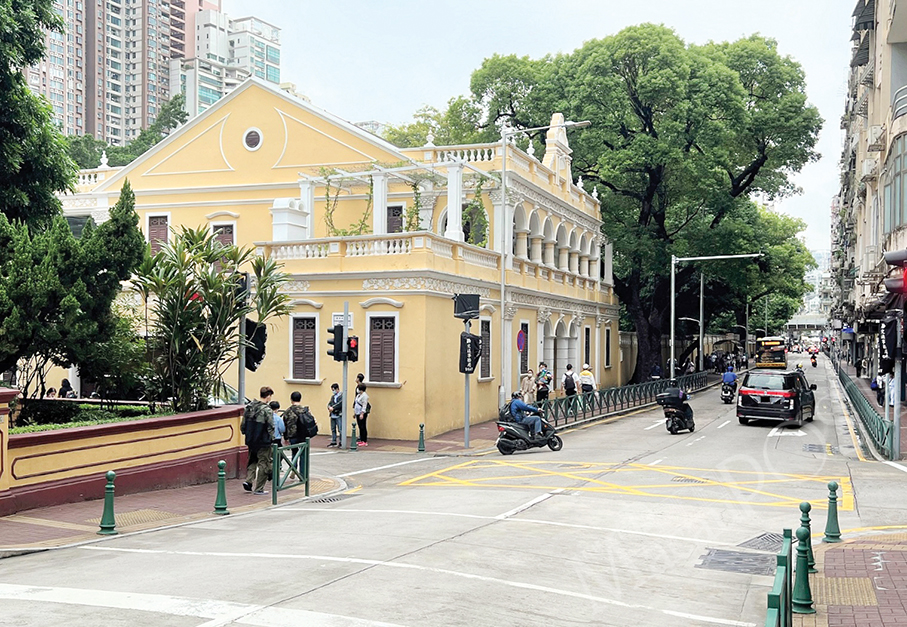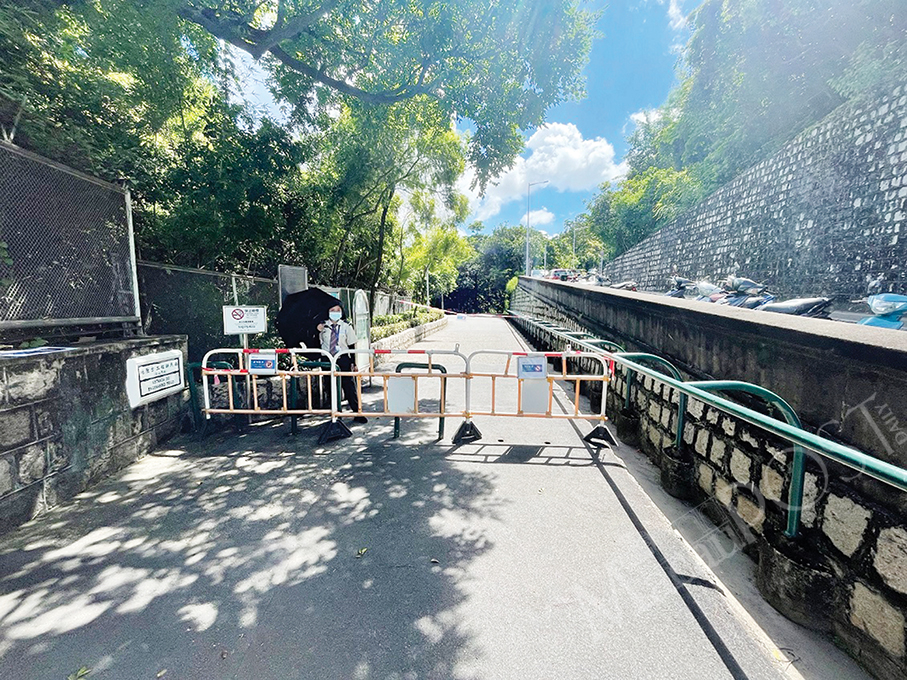An X crossing (aka pedestrian scramble or diagonal crossing) will come into use on Saturday at the junction of the busy Avenida do Conselheiro Ferreira de Almeida (荷蘭園大馬路) and Estrada de Adolfo Loureiro (羅利老馬路), i.e., the junction near Lou Lim Ieoc Garden, the Transport Bureau (DSAT) announced in a statement yesterday.
The statement said that the government has decided to set up a pedestrian scramble at the junction after assessing the thoroughfare’s traffic situation and vehicular flows.
According to Wikipedia, a pedestrian scramble is a type of traffic signal movement that temporarily stops all vehicular traffic, thereby allowing pedestrians to cross a junction in every direction, including diagonally, at the same time.
Avenida do Conselheiro Ferreira de Almeida, and Estrada de Adolfo Loureiro, are both one-way streets.
Currently, the traffic light-controlled crossings at the junction are traditional straight crossings.
The statement said that the new diagonal crossing at the junction will come into use once the respective road markings have been painted on Saturday morning.
The new pedestrian scramble on Avenida do Conselheiro Ferreira de Almeida that will come into use on Saturday is Macau’s third of its kind.
The city’s first diagonal crossing came into use in November last year at the junction of Rua da Serenidade (永定街) and Rua da Tribuna (看台街), a neighbourhood near the Barrier Gate border checkpoint.
Macau’s second X crossing came into use in May this year at the junction of the busy Avenida do Coronel Mesquita (美副將大馬路) Rua de São João Bosco (鮑思高街), i.e., outside Dom Bosco (Yuet Wah) College (鮑思高粵華小學). The junction is used by a large number of schoolchildren.
Yesterday’s statement also said that the operations of the pedestrian scramble near the Barrier Gate checkpoint, and the one on Avenida do Coronel Mesquita, have achieved “satisfactory” results since they started operating in November and May respectively.
The statement underlined that compared to traditional straight crossings, diagonal crossings enable pedestrians to cross the respective junctions in a shorter time, and allow extra spaces for them to cross there.
While globally pedestrian scrambles are used in a number of countries and regions, they are particularly common in major cities in Japan.

This undated handout photo provided by the Transport Bureau (DSAT) yesterday shows the junction of Avenida do Conselheiro Ferreira de Almeida and Estrada de Adolfo Loureiro.








